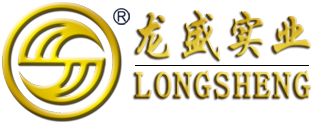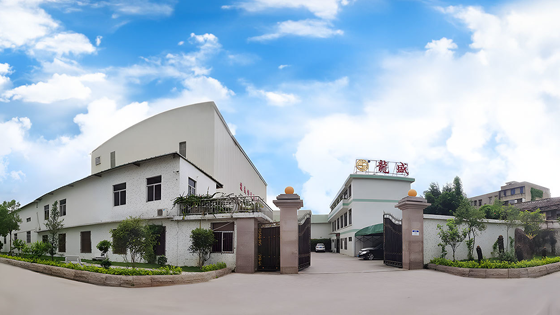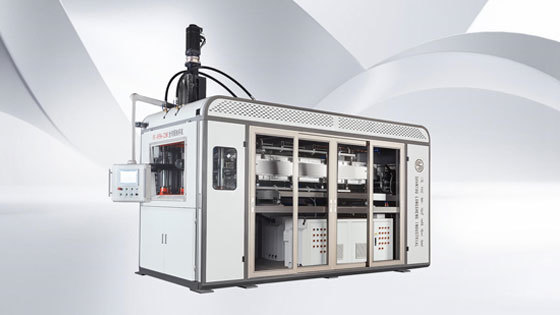Unlocking the Potential of Cost-Effective Customized Plastic Thermoforming Machines
Time: 2025-11-07 11:50:29.374
Exploring Cost-Effectiveness in Customized Plastic Thermoforming Machines Table of Contents 1. Introduction to Plastic Thermoforming Machines 2. Understanding Cost-Effectiveness 3. Factors Influencing the Cost of Customized Thermoforming Machines 3.1. Material Selection and Its Impact 3.2. Design Complexity and Customization 3.3. Technological Advancements and Automation 4. The Role of Energy Effi
Exploring Cost-Effectiveness in Customized Plastic Thermoforming Machines
Table of Contents
1. Introduction to Plastic Thermoforming Machines
2. Understanding Cost-Effectiveness
3. Factors Influencing the Cost of Customized Thermoforming Machines
3.1. Material Selection and Its Impact
3.2. Design Complexity and Customization
3.3. Technological Advancements and Automation
4. The Role of Energy Efficiency in Cost-Effectiveness
5. Evaluating Machine Lifespan and Maintenance Costs
6. Return on Investment (ROI) for Customized Thermoforming Machines
7. Case Studies: Successful Implementation of Customized Thermoforming Solutions
8. Frequently Asked Questions (FAQs)
9. Conclusion
1. Introduction to Plastic Thermoforming Machines
Plastic thermoforming machines have become indispensable in various industries, offering robust solutions for creating customized plastic products. This process involves heating plastic sheets until they become pliable and then forming them into specific shapes using molds. The versatility and efficiency of **plastic thermoforming** make it a popular choice in sectors ranging from packaging to automotive and consumer goods.
As we delve into the topic of cost-effectiveness, it is essential to recognize that investing in a customized thermoforming machine can lead to significant long-term savings and productivity gains. Understanding the nuances of this investment is crucial for manufacturers aiming to stay competitive in the ever-evolving market landscape.
2. Understanding Cost-Effectiveness
Cost-effectiveness refers to achieving optimal results for the least amount of financial investment. In the realm of customized plastic thermoforming machines, it encompasses not only the initial purchase price but also operational costs, maintenance expenses, and the anticipated return on investment. A cost-effective machine maximizes output while minimizing waste and downtime, making it an attractive option for manufacturers.
To assess cost-effectiveness, companies must consider various elements, including efficiency, reliability, and the overall quality of the finished product. By focusing on these factors, manufacturers can make informed decisions that align with their operational goals.
3. Factors Influencing the Cost of Customized Thermoforming Machines
When evaluating the cost-effectiveness of customized plastic thermoforming machines, several critical factors come into play.
3.1. Material Selection and Its Impact
The choice of materials directly influences both the performance and cost of thermoforming machines. Different polymers exhibit unique properties, affecting their processing temperatures, cycle times, and overall manufacturability. Selecting materials that align with product specifications while being cost-effective is vital for optimizing machine performance.
For instance, high-performance materials like polycarbonate may provide superior durability, but they can also increase production costs. Conversely, using more economical options like PET or PVC can decrease expenses while meeting specific application needs. Manufacturers should analyze the trade-offs between material quality and cost to find the best balance for their operations.
3.2. Design Complexity and Customization
Customized designs often come with a higher price tag, reflecting the complexity of the molds and the machine modifications needed. However, investing in advanced designs can lead to superior product differentiation and market competitiveness. Manufacturers must assess the long-term benefits of these customizations against the initial costs.
Simplifying designs where possible can reduce mold costs and lead to faster production cycles. Companies can also collaborate with machine manufacturers to find innovative solutions that minimize complexity while still achieving desired outcomes.
3.3. Technological Advancements and Automation
The integration of advanced technology and automation in thermoforming machines can significantly enhance cost-effectiveness. Automated processes lead to reduced labor costs, improved precision, and faster cycle times. Investing in state-of-the-art technology may require a higher upfront cost but can lead to substantial savings over time.
For example, machines equipped with smart technology can monitor and adjust settings in real-time to ensure optimal performance, thereby minimizing waste and enhancing product consistency. Manufacturers should carefully evaluate the potential ROI of incorporating such technologies.
4. The Role of Energy Efficiency in Cost-Effectiveness
Energy consumption is a significant factor impacting the overall operational costs of plastic thermoforming machines. Energy-efficient machines can lead to substantial savings in utility bills and contribute to a company's sustainability goals.
Investing in energy-efficient models, such as those utilizing advanced heating systems or insulation, can greatly reduce energy consumption. Furthermore, many manufacturers are increasingly prioritizing sustainability, making energy efficiency a critical aspect of their purchasing decisions.
5. Evaluating Machine Lifespan and Maintenance Costs
The lifespan of a plastic thermoforming machine is another crucial consideration in determining its cost-effectiveness. Machines that are durable and require less frequent maintenance can lead to lower long-term costs.
Regular maintenance is essential to prolonging the life of these machines. Companies should establish a routine maintenance schedule and ensure that they are using quality replacement parts to minimize downtime and costly repairs.
Additionally, manufacturers should consider warranties and service agreements when purchasing machinery, as these can provide added value and peace of mind regarding future expenses.
6. Return on Investment (ROI) for Customized Thermoforming Machines
Calculating the ROI of customized thermoforming machines is vital for manufacturers to understand the financial implications of their investment. This involves comparing the cost of the machine against the expected revenue generated from its use.
A thorough analysis includes considering factors such as production volume, product pricing, and market demand. Companies should also factor in qualitative benefits, such as improved product quality, enhanced customer satisfaction, and brand reputation, which can indirectly contribute to increased sales and profitability.
7. Case Studies: Successful Implementation of Customized Thermoforming Solutions
Examining real-world case studies can provide valuable insights into the practical application of customized thermoforming machines. For instance, a packaging company that integrated a new thermoforming machine observed a 30% reduction in material waste and a 25% increase in production speed.
By sharing success stories, manufacturers can learn from each other’s experiences and better understand how to maximize the benefits of their investments in thermoforming technology.
8. Frequently Asked Questions (FAQs)
1. What is the primary benefit of customized plastic thermoforming machines?
Customized plastic thermoforming machines provide manufacturers with the flexibility to produce unique products tailored to specific market needs, enhancing competitiveness and customer satisfaction.
2. How can I assess the cost-effectiveness of a thermoforming machine?
Evaluating factors such as material costs, maintenance expenses, energy consumption, and expected ROI will provide a comprehensive understanding of a machine's cost-effectiveness.
3. Are there specific materials that are more cost-effective for thermoforming?
Yes, materials like PET and PVC are generally more economical compared to high-performance options like polycarbonate, depending on the application.
4. What role does energy efficiency play in thermoforming cost-effectiveness?
Energy efficiency directly impacts operational costs, and investing in energy-efficient machines can result in significant savings over time.
5. How often should I perform maintenance on my thermoforming machine?
Regular maintenance should be performed according to the manufacturer's recommendations, typically every few months, to ensure optimal performance and longevity.
9. Conclusion
In conclusion, exploring the cost-effectiveness of customized plastic thermoforming machines requires a comprehensive understanding of various influencing factors. From material selection to technological advancements and energy efficiency, each aspect plays a crucial role in maximizing investment returns. By carefully evaluating these elements and learning from industry case studies, manufacturers can make informed decisions that drive profitability and sustainability in their operations. Investing in the right thermoforming technology not only leads to immediate cost savings but also positions companies for long-term success in an increasingly competitive marketplace.
Related News
Exploring the Advantages of China Multi-Station Thermoforming Machines
In the realm of manufacturing and processing machinery, the China multi-station thermoforming machine stands out as a versatile tool designed for producing a wide array of plastic products. Thermoforming is a process where plastic sheets are heated until pliable and then formed into specific shapes using molds. This technique is particularly advantageous for high-volume production runs and intrica
Key Performance Indicators for PVC Thermoforming Machine Efficiency Introduction to PVC Thermoforming Machine Efficiency In the competitive landscape of the manufacturing industry, particularly in the realm of plastic processing, measuring and enhancing the efficiency of PVC thermoforming machines is paramount. As companies strive to maximize production while minimizing waste, understanding the **
Understanding the Role of PP Thermoforming Machine Companies in Plastic Manufacturing
In the ever-evolving landscape of the plastic processing industry, PP thermoforming machine companies play a pivotal role in advancing manufacturing processes. These specialized companies focus on the design, development, and production of thermoforming machines that utilize polypropylene (PP), a versatile and widely used thermoplastic polymer. Thermoforming, a process that involves heating a plas
Maximize Output with the Newest Pet Thermoforming Machine: A Comprehensive Guide
Maximize Output with the Newest Pet Thermoforming Machine: A Comprehensive Guide Introduction to Pet Thermoforming Machines The manufacturing landscape is continually evolving, and with it, the demand for more efficient production methods. Pet thermoforming machines have emerged as essential tools in plastic processing, offering innovative solutions for creating high-quality products. In this guid
Contact Us
China Shantou Longsheng Industry Co., Ltd.
Address:No.44 Xigang Road, Shantou, Guangdong, China
Mob: +86-13302710116
Shiela:+86-15362312727
E-mail: longshengmachine@gmail.com



TikTok





